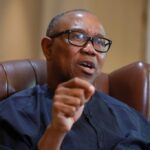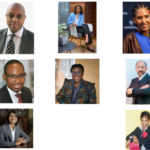by Cathy Smith, Managing Director at SAP Africa

LAGOS, Nigeria, 24 February 2023 -/African Media Agency(AMA)/- The last few years have revealed the futility of making predictions about what lies ahead. In our uncertain times, the only guarantee is that the world will keep changing, with change coming at an ever-accelerating rate.
Faced with a sharp downturn in global economic growth, continued disruption to global supply chains from the pandemic and the conflict in Ukraine, and continued labour market instability, businesses will have their hands full in 2023.
However, for leaders navigating the turbulent waters ahead, it helps to keep an eye on some of the main risks lying in wait.
While there is no blueprint for how to successfully deal with the following three issues, I believe greater awareness of the task ahead may help leaders develop suitable strategies to ensure businesses and their employees can stay the course in the coming months.
In 2023, the number one task for businesses is learning to adapt to three significant forces shaping the landscape, namely:
1 Dealing with uncertainty and disruption
The challenging economic climate and ongoing uncertainty is calling for greater efficiency across markets and industries.
According to the latest UN data, world output growth is expected to slow to 1.9% in 2023, down from an estimated 3% in 2022. And no economy is immune: GDP growth in the US is expected to be a paltry 0.4% and only 0.2% in the EU. The outlook for developing countries is no better.
For leaders, this instability will force greater focus on keeping the business in balance. Constraints on the global supply chain will require greater investment into technologies that can increase end-to-end visibility, greater predictability and efficiency.
Leaders also need to acknowledge that there is no return to pre-pandemic conditions. Consumer habits have fundamentally changed. The way people purchase products, seek information, and engage with brands will continue to evolve. To meet these challenges, leaders need to improve their ability to deal with uncertainty and disruption.
2 Finding the perfect balance in leadership
The past few years have been especially tough on leaders. Coming to grips with the ‘new normal’ has meant a complete realignment of how to deal with customers, how to manage employees, how to enable remote and hybrid work environments, and how to deal with unprecedented change.
These challenges have taken their toll on leaders, as can be evidenced by the recent resignation of New Zealand prime minister, Jacinda Ardern. Leaders, exhausted after several years of disruption and non-stop crisis management, may experience burnout, reducing their leadership capacity and putting additional pressure on organisations trying to navigate turbulent waters.
This year, leaders will need to dig deep, balancing empathy toward employees with the increasingly pressurised requirements of running a business.
This will demand higher levels of collaboration and co-creation, with the optimal leadership approach bringing in different perspectives to build policies and processes that can ride the waves of change while driving the business forward.
However, leaders will need to extend that same empathy to themselves. Leading organisations through turbulent times requires superb fitness and high degrees of physical and mental wellbeing. Much like the pilot of an airliner needs to put on their own oxygen mask before helping passengers during an emergency, so too must leaders take care of themselves to ensure they can stay the course and lead the business through adversity.
3 Helping employees find sure footing in the new world of work
Nowhere has the disruptive effect of the past few years become more visible than in the way we work. Since 2020, nearly every business on the planet has had to radically change their workplace models to accommodate remote and hybrid work.
As pandemic pressures ease, there are growing calls for a return to full office work among businesses. Companies that have seen their cultures diluted, their teams scattered, and their office buildings standing empty will be hungry for a return to the office.
However, employees are unlikely to sacrifice the gains achieved over the past few years. Employees have seen during the lockdown periods that they can remain productive and achieve the desired outcomes outside the confines of corporate headquarters. Why sit in rush-hour traffic for hours only to get to an office to perform tasks that could just as easily be done from home?
This year, leaders will need to embrace a consultative approach and co-create the new world of work with regular input from employees. An openness to shorter workdays, a reduced work week, hybrid and remote work models will give leaders the flexibility to meet employee demands, which must to be balanced with the business’ own interests.
There is no handbook for leaders to follow in 2023 that will allow them to successfully navigate the looming challenges. Instead, successful leaders will need an approach that provides opportunities for co-creating the ideal work environment, one that can withstand the disruptive forces of change while mobilising employees behind common goals that drive the business toward success.
Distributed by African Media Agency (AMA) on behalf of SAP Africa.
Visit the SAP News Center. Follow SAP on Twitter at @SAPNews.
About SAP
SAP’s strategy is to help every business run as an intelligent, sustainable enterprise. As a market leader in enterprise application software, we help companies of all sizes and in all industries run at their best: SAP customers generate 87% of total global commerce. Our machine learning, Internet of Things (IoT), and advanced analytics technologies help turn customers’ businesses into intelligent enterprises. SAP helps give people and organizations deep business insight and fosters collaboration that helps them stay ahead of their competition. We simplify technology for companies so they can consume our software the way they want – without disruption. Our end-to-end suite of applications and services enables business and public customers across 25 industries globally to operate profitably, adapt continuously, and make a difference. With a global network of customers, partners, employees, and thought leaders, SAP helps the world run better and improve people’s lives. For more information, visit www.sap.com.
© 2022 SAP SE. All rights reserved.
SAP and other SAP products and services mentioned herein as well as their respective logos are trademarks or registered trademarks of SAP SE in Germany and other countries. Please see https://www.sap.com/copyright for additional trademark information and notices.
Note to editors:
To preview and download broadcast-standard stock footage and press photos digitally, please visit www.sap.com/photos. On this platform, you can find high resolution material for your media channels. To view video stories on diverse topics, visit www.sap-tv.com. From this site, you can embed videos into your own Web pages, share video via email links, and subscribe to RSS feeds from SAP TV.
For customers interested in learning more about SAP products:
Global Customer Center: +49 180 534-34-24
For more information, press only:
Delia Sieff, SAP Africa, +27 (11) 235 6000, delia.sieff@sap.com
The post <strong>With change the only constant, leaders will need to be adaptive in 2023</strong> appeared first on African Media Agency.





